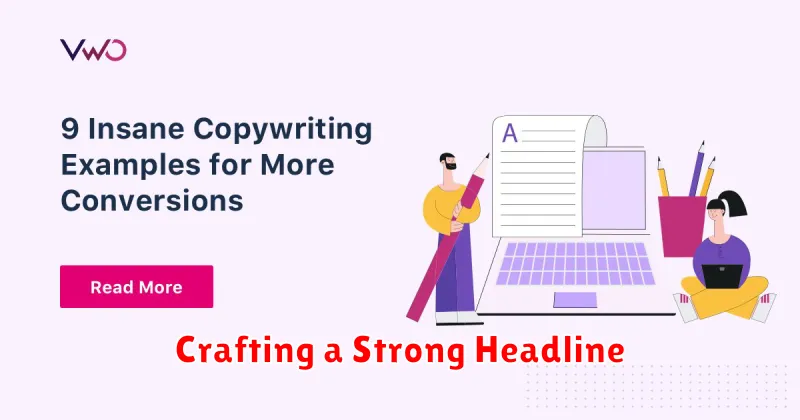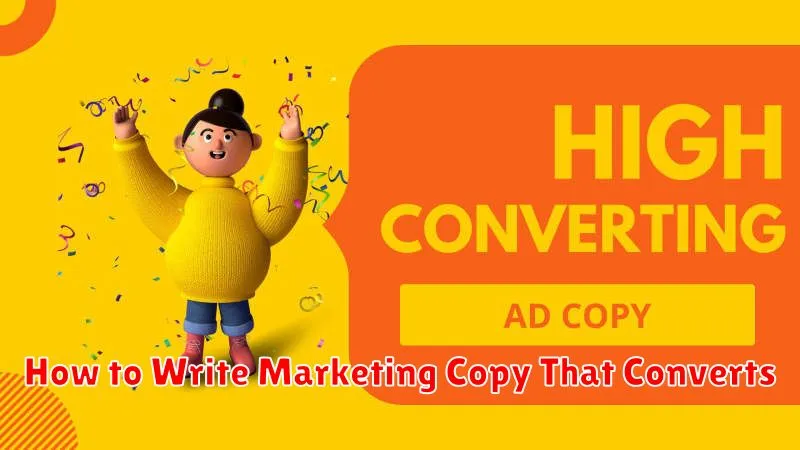Are you struggling to write marketing copy that converts? Do your landing pages and ad campaigns fall flat, failing to generate the leads and sales you need? Crafting compelling marketing copy is essential for any successful business. This article will delve into the key strategies and techniques you can employ to write high-converting marketing copy that resonates with your target audience, drives engagement, and ultimately boosts your bottom line. Learn how to transform your words into powerful tools for persuasion, turning casual browsers into loyal customers. From understanding your audience to crafting a compelling call to action, we’ll cover everything you need to know to create marketing copy that truly converts.
Mastering the art of writing effective marketing copy is more than just stringing words together; it’s about understanding the psychology of persuasion and applying it to your writing. This article will equip you with the practical skills and knowledge necessary to create marketing copy that converts prospects into paying customers. We’ll explore the principles of persuasive writing, including crafting compelling headlines, highlighting key benefits, and overcoming objections. By the end of this article, you’ll have the confidence and expertise to write marketing copy that delivers results and significantly impacts your marketing ROI. Prepare to transform your marketing efforts and unlock the true potential of your written content.
Understanding Your Audience First
Before crafting any marketing copy, it’s crucial to understand your target audience. Knowing your audience informs every aspect of your copy, from the language you use to the benefits you highlight.
Consider these key questions:
- Who are they? Define demographics like age, location, occupation, and income level.
- What are their pain points? What problems are they trying to solve?
- What are their motivations? What drives their purchasing decisions?
- Where do they spend their time online? Which platforms and websites do they frequent?
By answering these questions, you can create a detailed profile of your ideal customer. This profile will serve as a guide as you write compelling and effective marketing copy that resonates with your audience and ultimately drives conversions.
Highlighting Benefits Over Features
Customers don’t buy features; they buy benefits. A feature is a factual statement about your product or service. A benefit explains how that feature improves a customer’s life or solves their problem. Focusing on benefits creates a stronger connection with your audience and increases the likelihood of conversion.
For example, instead of saying “This phone has a 50MP camera” (feature), say “Capture stunningly detailed photos and videos of your precious memories” (benefit). Instead of “This software has cloud integration” (feature), say “Access your work from anywhere, anytime, and collaborate seamlessly with your team” (benefit).
Always ask yourself, “So what?” after stating a feature. This helps you translate the feature into a tangible benefit for the customer. By emphasizing the positive outcomes of using your product or service, you create a more compelling and persuasive message that resonates with their needs and desires.
Using Emotional Triggers Effectively
Emotional triggers are powerful tools in marketing copy. They tap into the subconscious, influencing decisions and driving action. By understanding and utilizing these triggers, you can significantly improve your conversion rates.
Several key emotional triggers resonate strongly with consumers. Fear of missing out (FOMO) creates urgency, prompting immediate purchases. Highlighting scarcity and limited-time offers effectively utilizes this trigger. Aspirational desires, such as success, wealth, or status, motivate consumers to seek products that align with their goals. Emphasize how your product or service helps them achieve these aspirations.
Social proof plays a crucial role in building trust and credibility. Testimonials, reviews, and influencer endorsements demonstrate the value of your offering. Pain points offer another avenue. Acknowledge your target audience’s struggles and position your product as the solution. By addressing these emotional triggers effectively, your marketing copy will connect with your audience on a deeper level, leading to higher conversions.
Crafting a Strong Headline

Your headline is the first, and often only, impression you make on a potential customer. A compelling headline grabs attention and entices readers to delve into your marketing copy. It should be clear, concise, and benefit-driven, highlighting the value proposition of your product or service.
Consider these key elements when crafting your headlines:
- Brevity: Keep it short and to the point. Aim for around 6-10 words.
- Clarity: Communicate your message instantly. Avoid jargon or complex language.
- Value Proposition: Clearly state the benefit to the reader. What problem does your product or service solve?
- Urgency/Scarcity: Consider incorporating elements of urgency or scarcity to encourage immediate action (e.g., “Limited-Time Offer”). Use this tactic sparingly.
- Target Audience: Tailor your language to resonate with your specific target audience.
Adding a Clear Call-to-Action (CTA)

A compelling call-to-action (CTA) is crucial for converting prospects into customers. It directs the reader towards the desired action, guiding them through the conversion funnel.
Clarity is paramount. Your CTA should be easily understood and leave no room for ambiguity. Use strong action verbs that clearly communicate the intended action, such as “Download Now,” “Get a Free Quote,” or “Learn More.”
Placement is equally important. Position your CTA prominently where it’s easily visible to the reader. Consider placing it above the fold, at the end of a persuasive section, or within a visually distinct button.
Creating a sense of urgency can also significantly improve conversion rates. Phrases like “Limited Time Offer” or “While Supplies Last” can encourage immediate action.
Incorporating Social Proof
Social proof is a powerful tool in marketing copy. It leverages the human tendency to follow the actions of others, especially in situations of uncertainty. By showcasing positive experiences and endorsements, you build trust and credibility with potential customers.
Several methods can effectively incorporate social proof:
- Testimonials: Feature authentic customer testimonials that highlight the benefits of your product or service.
- Reviews: Encourage customers to leave reviews on platforms like Google, Yelp, or industry-specific sites.
- Case studies: Develop in-depth case studies showcasing successful client outcomes and quantifiable results.
- Social media engagement: Highlight positive comments, shares, and mentions on social media platforms.
- Expert endorsements: Partner with industry experts or influencers to lend credibility to your offerings.
- Trust badges: Display security badges, awards, or certifications to build trust and demonstrate legitimacy.
- User statistics: Share impressive usage statistics, such as the number of customers served or products sold.
When using social proof, ensure its relevance and authenticity. Testimonials should be genuine and specific, and data should be accurate and verifiable. By strategically incorporating social proof, you can significantly enhance the persuasiveness of your marketing copy.
Testing and Refining Your Copy
Creating effective marketing copy isn’t a one-and-done process. Testing and refinement are crucial for optimizing its performance and achieving desired conversion rates. After crafting your initial copy, rigorous testing helps determine what resonates with your target audience and what needs adjustment.
A/B testing is a highly effective method. This involves creating two slightly different versions (A and B) of your copy. These versions are then shown to separate segments of your audience. Track key metrics like click-through rates and conversion rates to identify the higher performing version. Focus your changes on specific elements such as headlines, calls to action, or even the overall tone.
Continuously analyze the data from your testing. Even small changes can significantly impact your results. Use the insights gained to further refine your copy, making incremental improvements over time.

